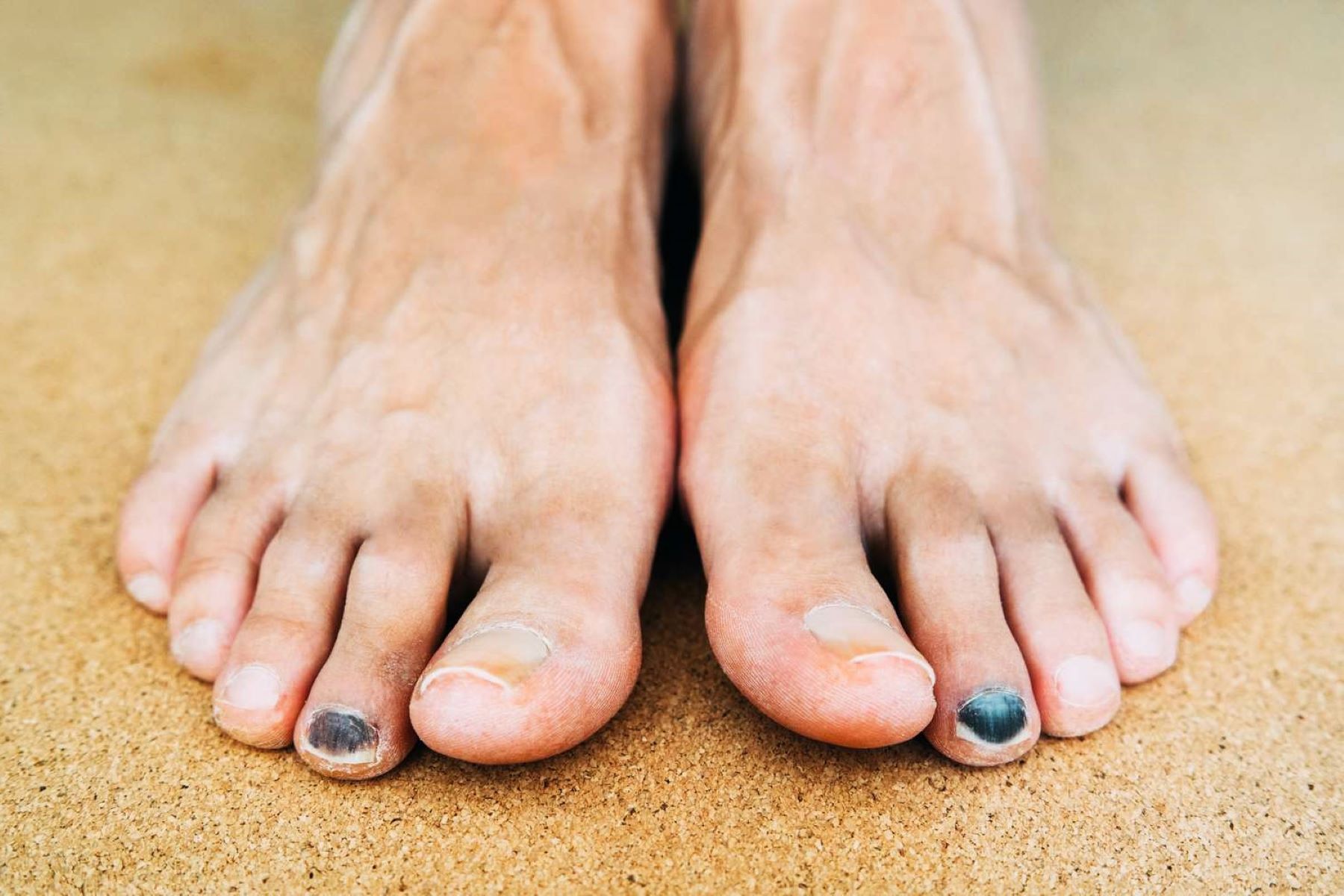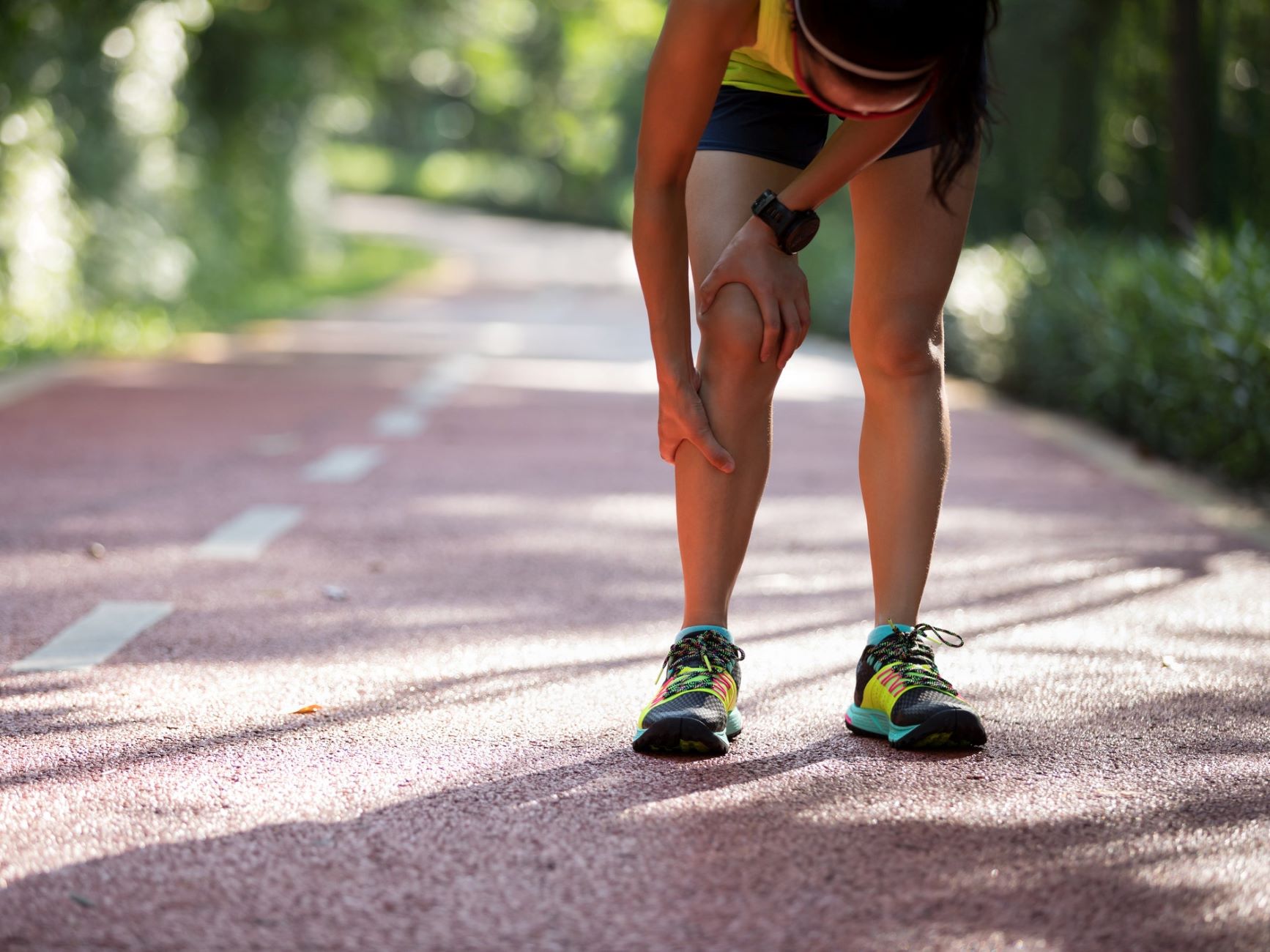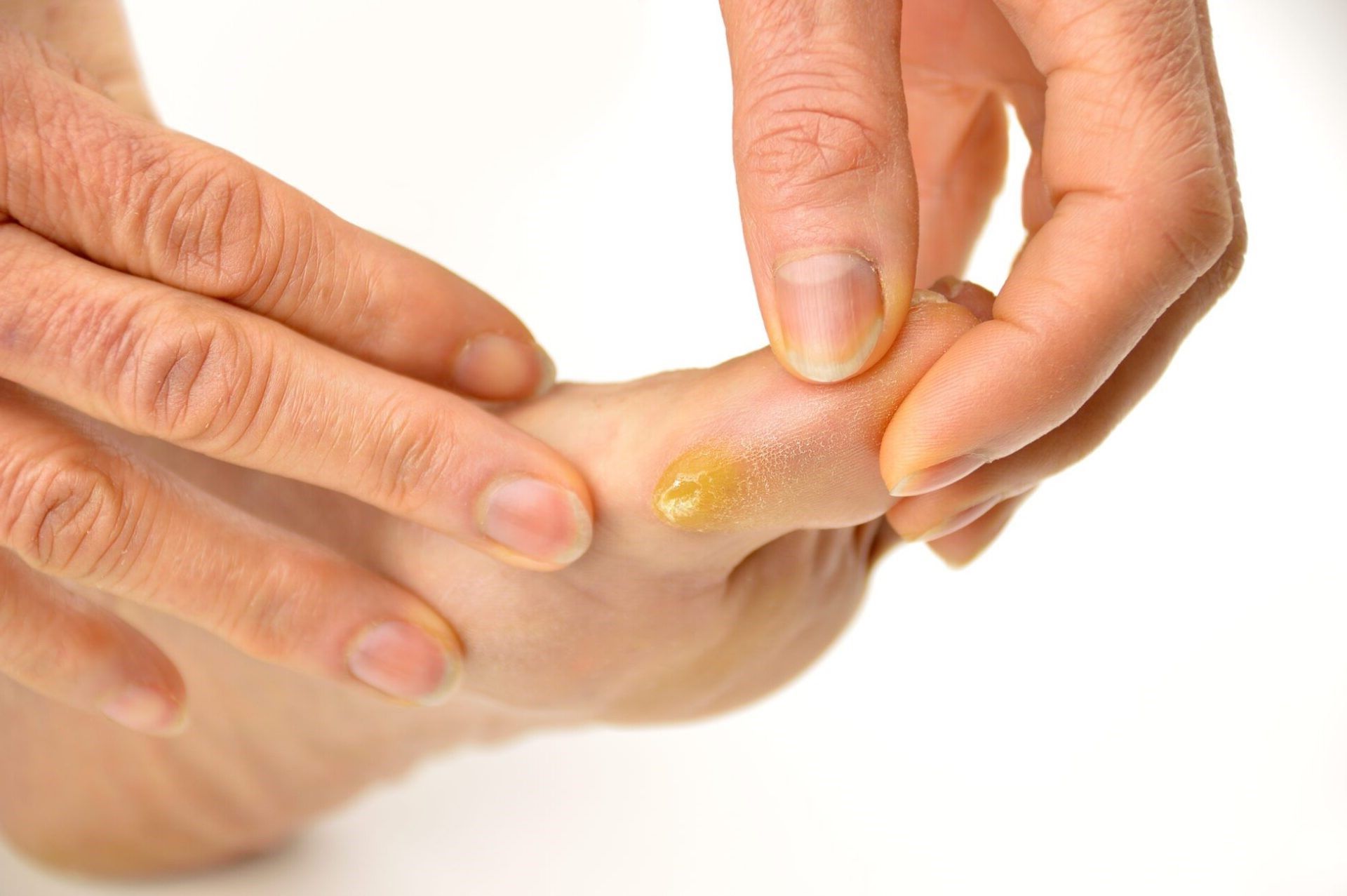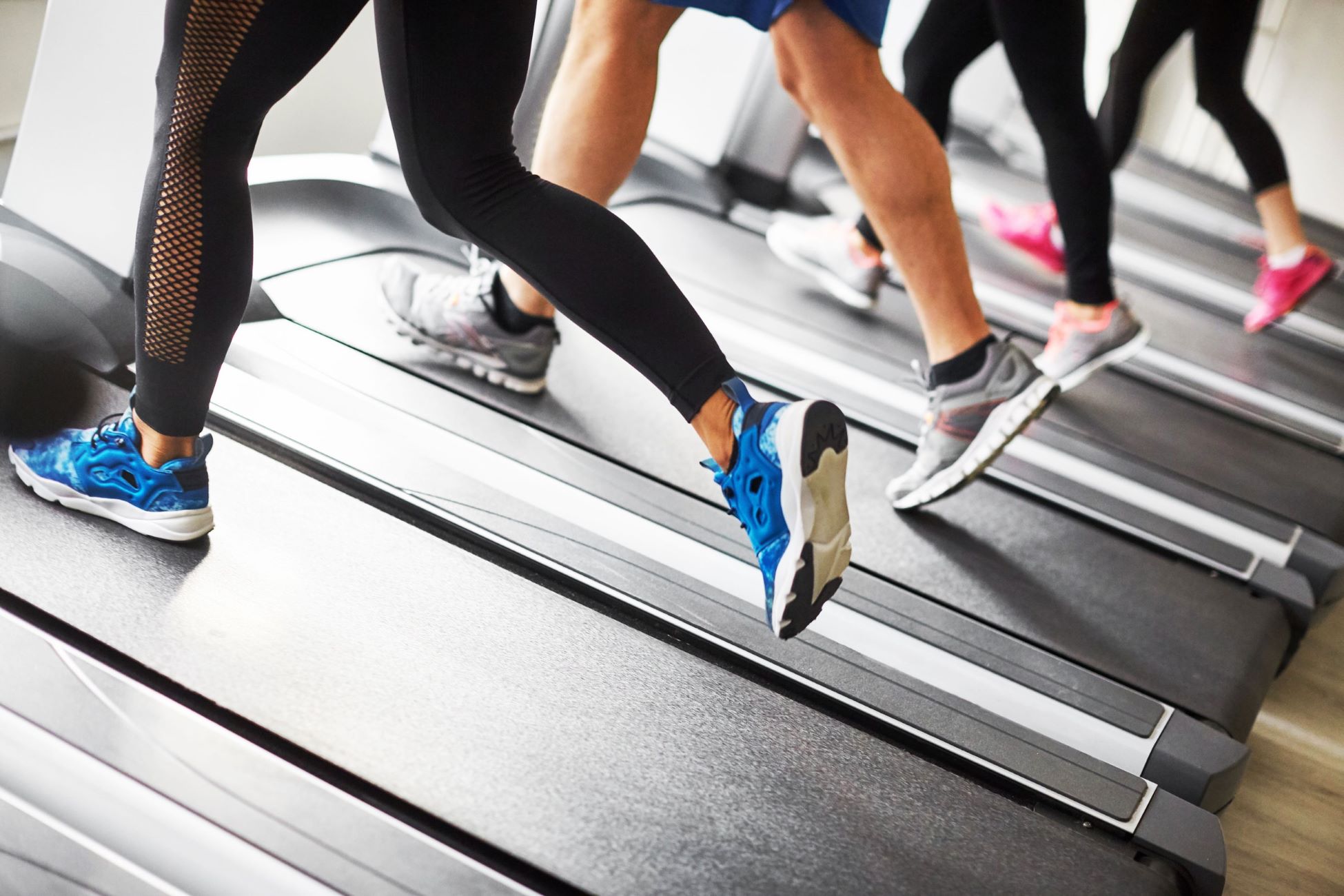Home>Health & Nutrition>Injury Prevention>Prevent Toenail Issues While Running
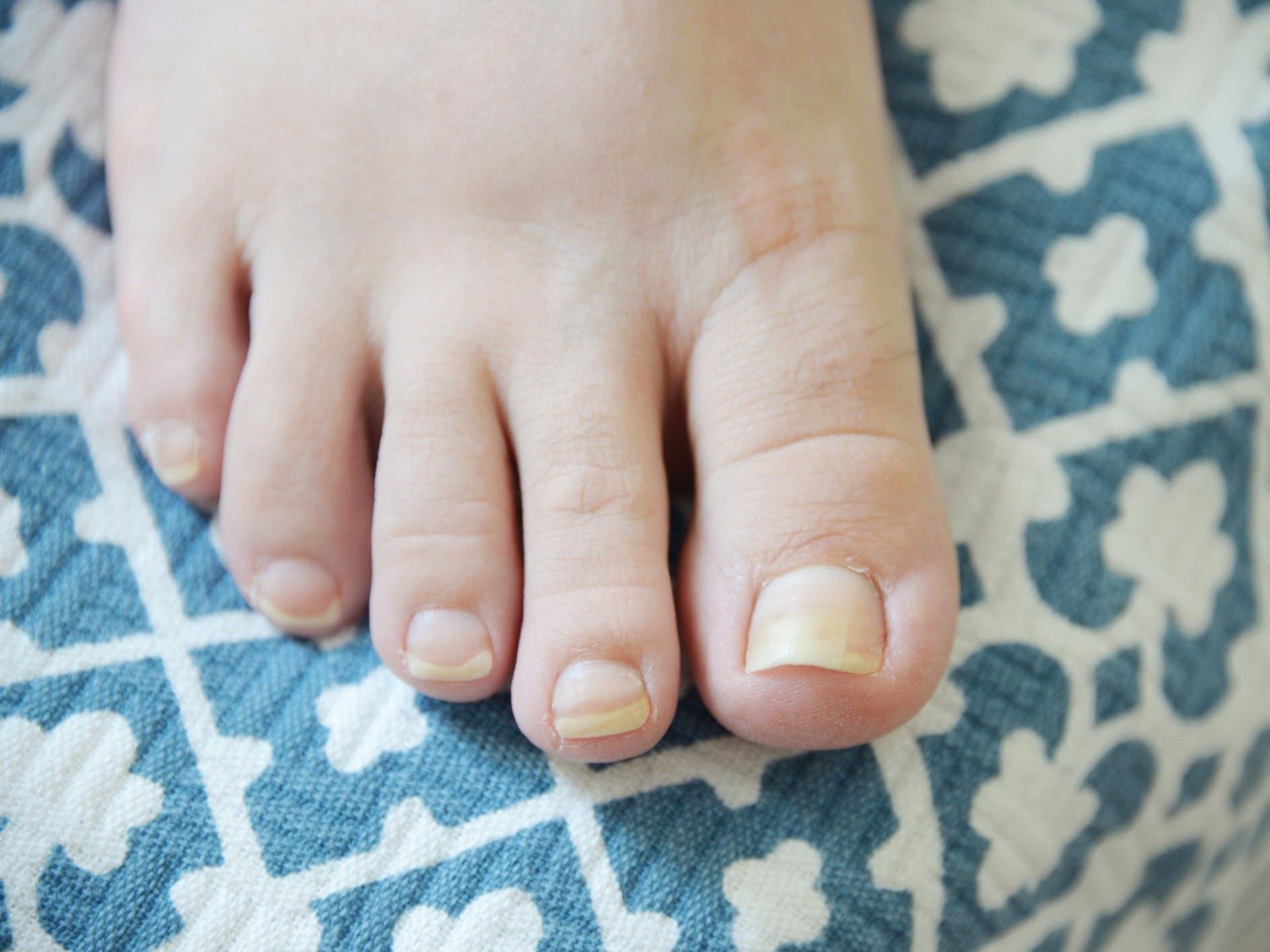

Injury Prevention
Prevent Toenail Issues While Running
Published: February 26, 2024
Learn how to prevent toenail issues while running with our injury prevention tips. Keep your feet healthy and pain-free during your runs.
(Many of the links in this article redirect to a specific reviewed product. Your purchase of these products through affiliate links helps to generate commission for Therunningadvisor.com, at no extra cost. Learn more)
Table of Contents
Common Toenail Issues for Runners
Running is an invigorating activity that offers numerous health benefits, but it can also lead to various toenail issues for runners. The repetitive stress and pressure exerted on the feet during running can result in discomfort and potential toenail problems. Understanding these common issues and implementing preventive measures is crucial for maintaining healthy toenails while enjoying the sport.
-
Black Toenails: Also known as runner's toe, black toenails are a prevalent issue among runners. This condition occurs when the toenail repeatedly hits the front of the shoe, leading to bruising and discoloration. The constant impact can cause blood to pool beneath the nail, resulting in a blackened appearance. To prevent black toenails, it's essential to wear properly fitted running shoes with ample toe room.
-
Toenail Fungus: Fungal infections can affect toenails, leading to discoloration, thickening, and brittleness. Runners are particularly susceptible to toenail fungus due to the warm, moist environment created by sweaty feet confined in running shoes. To mitigate the risk of toenail fungus, it's crucial to keep feet clean and dry, change socks frequently, and opt for moisture-wicking footwear.
-
Ingrown Toenails: The repetitive impact and pressure from running can contribute to ingrown toenails, where the nail grows into the surrounding skin, causing pain, redness, and swelling. Proper toenail trimming and wearing shoes with adequate toe space can help prevent ingrown toenails.
-
Toenail Trauma: Runners often experience toenail trauma, such as nail splitting or lifting, due to the constant pounding on hard surfaces. This can lead to discomfort and potential infection. Wearing cushioned and supportive footwear, especially on uneven terrains, can help minimize toenail trauma.
-
Thickened Toenails: Prolonged running can lead to thickened toenails, which may result from repetitive micro-trauma to the nail bed. Ensuring proper shoe fit and incorporating rest days into the running routine can alleviate the risk of thickened toenails.
By recognizing these common toenail issues and implementing preventive strategies, runners can safeguard their foot health and continue to enjoy the countless benefits of this exhilarating activity. Regularly inspecting the toenails for any signs of abnormalities and seeking prompt attention for any concerns can contribute to maintaining optimal foot health while pursuing a passion for running.
Proper Footwear for Running
Selecting the right footwear is a pivotal aspect of injury prevention and overall comfort for runners. The shoes worn during running play a crucial role in providing support, cushioning, stability, and protection for the feet, thereby influencing the overall running experience. When it comes to choosing the proper footwear for running, several key factors should be considered to ensure optimal performance and minimize the risk of toenail issues and other foot-related problems.
Factors to Consider
1. Shoe Fit:
The fit of running shoes is paramount. Ill-fitting shoes can lead to a myriad of issues, including black toenails, blisters, and discomfort. It's essential to select shoes that provide ample toe room to prevent the toenails from repeatedly hitting the front of the shoe, which can lead to black toenails. Additionally, ensuring a snug yet comfortable fit throughout the midfoot and heel area is crucial for stability and preventing toenail trauma.
2. Cushioning and Support:
The level of cushioning and support offered by running shoes directly impacts the distribution of impact forces during running. Adequate cushioning helps absorb shock and reduces the stress placed on the toenails and surrounding structures. Supportive shoes can aid in maintaining proper foot alignment, minimizing the risk of toenail trauma and other foot-related issues.
3. Breathability and Moisture Management:
Opting for running shoes with breathable materials and moisture-wicking properties is essential for preventing toenail fungus and maintaining overall foot hygiene. Breathable shoes help in reducing moisture accumulation, thus minimizing the risk of fungal infections and discomfort caused by sweaty feet.
4. Terrain-Specific Shoes:
Consider the running terrain when selecting footwear. Different terrains may require specific shoe features for optimal performance and foot protection. For instance, trail running shoes offer enhanced traction and protection against uneven surfaces, reducing the risk of toenail trauma and other foot injuries.
Professional Fitting and Evaluation
Seeking professional guidance from knowledgeable staff at specialty running stores can be invaluable in finding the right footwear. These experts can assess individual foot mechanics, gait patterns, and specific needs to recommend suitable shoes that cater to the unique requirements of each runner.
Regular Replacement
It's important to monitor the condition of running shoes and replace them periodically. Over time, the cushioning and support of shoes diminish, potentially leading to increased stress on the toenails and feet. Regularly replacing worn-out shoes can help maintain optimal foot health and reduce the likelihood of developing toenail issues.
By carefully considering these factors and seeking professional guidance when necessary, runners can make informed decisions when selecting running shoes. Investing in high-quality, properly fitting footwear tailored to individual needs can significantly contribute to preventing toenail issues and promoting overall foot health during running activities.
Tips for Trimming Toenails
Proper toenail care is essential for runners to prevent discomfort and potential toenail issues. When it comes to trimming toenails, following the right techniques can significantly contribute to maintaining optimal foot health and minimizing the risk of problems such as ingrown toenails and trauma. Here are some valuable tips for trimming toenails effectively:
-
Use the Right Tools: Invest in high-quality toenail clippers or scissors specifically designed for trimming toenails. These tools should have sharp, straight blades to ensure precise and clean cuts without causing damage to the nails.
-
Trim Straight Across: When trimming toenails, it's important to cut them straight across to prevent ingrown toenails. Avoid rounding the corners, as this can lead to the nail growing into the surrounding skin, potentially causing pain and inflammation.
-
Proper Length: Aim to keep the toenails at a moderate length, neither too short nor excessively long. Trimming them too short can increase the risk of ingrown toenails, while leaving them excessively long may lead to discomfort and potential trauma during running.
-
Avoid Trimming Too Close to the Skin: When trimming toenails, leave a small margin of the white nail plate to prevent cutting the skin and causing irritation or ingrown toenails.
-
Regular Maintenance: Establish a regular toenail trimming routine to keep them at an appropriate length. This can help prevent the nails from hitting the front of the shoe and minimize the risk of black toenails.
-
Inspect for Abnormalities: While trimming toenails, take the opportunity to inspect them for any signs of abnormalities, such as discoloration, thickening, or unusual growth patterns. Promptly addressing any irregularities can aid in early detection and management of potential toenail issues.
-
Consider Professional Assistance: For individuals with specific concerns or conditions such as thickened or ingrown toenails, seeking professional assistance from a podiatrist or foot care specialist can provide valuable guidance and care tailored to individual needs.
By incorporating these tips into the toenail care routine, runners can proactively manage their foot health and reduce the likelihood of encountering toenail issues. Proper toenail trimming, when combined with suitable footwear and preventive measures, plays a crucial role in ensuring a comfortable and enjoyable running experience while safeguarding overall foot well-being.
Preventing Ingrown Toenails
Ingrown toenails can cause significant discomfort and may hinder a runner's performance. Implementing preventive measures is crucial to minimize the risk of developing this painful condition. By adopting proper foot care practices and making informed choices, runners can effectively prevent ingrown toenails and maintain optimal foot health.
Proper Toenail Trimming
One of the primary preventive strategies for ingrown toenails is to ensure proper toenail trimming. When cutting toenails, it is essential to trim them straight across, avoiding rounded edges. This technique helps prevent the nails from growing into the surrounding skin, reducing the likelihood of developing ingrown toenails. Additionally, maintaining an appropriate nail length and avoiding excessively short cuts can contribute to preventing this uncomfortable condition.
Suitable Footwear Selection
Choosing well-fitted running shoes with adequate toe room is essential for preventing ingrown toenails. Shoes that are too tight or constricting can exert pressure on the toenails, potentially leading to their improper growth and the development of ingrown toenails. Ensuring that running shoes provide ample space for the toes and do not compress the nails can significantly reduce the risk of this painful condition.
Foot Hygiene and Moisture Management
Maintaining proper foot hygiene and managing moisture levels is crucial in preventing ingrown toenails. Keeping the feet clean and dry, especially after running or engaging in physical activities, can help minimize the risk of fungal infections and skin softening, which can contribute to ingrown toenails. Additionally, wearing moisture-wicking socks and breathable footwear can aid in reducing moisture accumulation, thereby promoting overall foot health and preventing ingrown toenails.
Regular Foot Inspection
Regularly inspecting the toenails and surrounding skin for any signs of abnormalities or early indications of ingrown toenails is essential for proactive prevention. By promptly addressing any potential concerns, such as redness, tenderness, or nail irregularities, runners can take proactive measures to prevent the progression of ingrown toenails and seek appropriate care if needed.
Seeking Professional Assistance
In cases where individuals are prone to ingrown toenails or have specific foot conditions, seeking professional assistance from a podiatrist or foot care specialist is advisable. These experts can provide tailored guidance, address underlying factors contributing to ingrown toenails, and offer specialized care to prevent the recurrence of this uncomfortable condition.
By incorporating these preventive measures into their foot care routine, runners can effectively reduce the risk of developing ingrown toenails and maintain optimal foot health. Prioritizing proper toenail trimming, selecting suitable footwear, practicing good foot hygiene, and seeking professional guidance when necessary can contribute to a comfortable and enjoyable running experience while minimizing the likelihood of encountering ingrown toenails.
Managing Toenail Fungus
Toenail fungus, medically known as onychomycosis, is a common condition that can affect runners, posing challenges to foot health and comfort. Fungal infections of the toenails often lead to discoloration, thickening, brittleness, and potential discomfort, impacting the overall running experience. Effectively managing toenail fungus is essential for runners to alleviate symptoms, prevent the spread of the infection, and maintain optimal foot health.
Read more: The Essentials Of Fungal Toenail Infections
Recognizing Symptoms
The first step in managing toenail fungus is to recognize the symptoms, which may include yellowing or darkening of the nail, thickening, brittleness, and changes in nail shape. Additionally, affected nails may exhibit a distorted appearance and emit a foul odor. By promptly identifying these signs, runners can take proactive measures to address the condition and prevent its progression.
Maintaining Foot Hygiene
Practicing good foot hygiene is crucial in managing toenail fungus. Runners should thoroughly clean and dry their feet after running, paying particular attention to the toenails. Keeping the feet clean and dry helps create an environment that is less conducive to fungal growth, thereby aiding in the management of toenail fungus. Additionally, changing socks frequently and opting for moisture-wicking footwear can contribute to maintaining optimal foot hygiene and minimizing the risk of fungal infections.
Topical Treatments
Utilizing topical antifungal treatments can be an effective approach to managing toenail fungus. Over-the-counter antifungal creams, ointments, or nail lacquers can be applied directly to the affected nails, targeting the fungal infection. Consistent and diligent application of these treatments, following the recommended guidelines, can aid in combating the fungus and promoting the gradual improvement of affected toenails.
Seeking Professional Care
In cases where toenail fungus persists or is particularly severe, seeking professional care from a podiatrist or healthcare provider is advisable. These professionals can assess the extent of the infection, provide expert guidance on appropriate treatment options, and offer specialized care tailored to individual needs. Advanced treatment modalities, such as oral antifungal medications or laser therapy, may be recommended for more stubborn cases of toenail fungus.
Preventive Measures
Implementing preventive measures is essential in managing toenail fungus and preventing its recurrence. Runners should prioritize wearing breathable footwear, practicing good foot hygiene, and avoiding prolonged periods of moisture accumulation in the shoes. Additionally, regularly inspecting the toenails for any signs of fungal infection and promptly addressing any concerns can aid in preventing the spread of toenail fungus and maintaining optimal foot health.
By incorporating these strategies into their foot care routine, runners can effectively manage toenail fungus, alleviate discomfort, and promote the gradual improvement of affected toenails. Prioritizing foot hygiene, utilizing topical treatments, seeking professional care when necessary, and implementing preventive measures can contribute to a more comfortable and enjoyable running experience while addressing toenail fungus effectively.
Seeking Professional Help for Toenail Issues
Seeking professional assistance is paramount when encountering persistent or severe toenail issues that significantly impact foot health and running comfort. Podiatrists, foot care specialists, and healthcare providers possess the expertise to assess, diagnose, and provide tailored care for a wide range of toenail concerns, ensuring comprehensive management and resolution.
When runners experience persistent toenail pain, discoloration, abnormal growth patterns, or recurrent issues such as ingrown toenails or toenail fungus, seeking prompt professional help is crucial. Podiatrists are equipped to conduct thorough evaluations, utilizing specialized tools and diagnostic techniques to accurately assess the underlying causes of toenail issues. Through comprehensive examinations, they can identify specific conditions, such as fungal infections, structural abnormalities, or biomechanical factors contributing to toenail trauma.
Professional assessment also enables the formulation of personalized treatment plans tailored to individual needs. Podiatrists can recommend targeted interventions, such as advanced toenail care, topical or oral medications for fungal infections, orthotic devices to address biomechanical issues, or minimally invasive procedures for ingrown toenails. Their expertise in toenail surgery allows for precise and effective management of complex toenail conditions, providing relief and promoting optimal foot health.
Moreover, seeking professional help facilitates ongoing monitoring and follow-up care, ensuring the effectiveness of treatment interventions and addressing any evolving toenail concerns. Podiatrists can offer valuable guidance on preventive strategies, proper foot care practices, and footwear selection tailored to the unique needs of runners, empowering individuals to proactively safeguard their foot health and prevent the recurrence of toenail issues.
By collaborating with podiatrists and foot care specialists, runners can access specialized knowledge, advanced treatment modalities, and individualized care essential for effectively addressing toenail issues. Professional intervention not only alleviates discomfort and resolves existing concerns but also fosters long-term foot health, enabling runners to pursue their passion for running with confidence and comfort.
In summary, seeking professional help for toenail issues is a proactive and essential step in managing persistent or complex toenail concerns. Podiatrists and foot care specialists play a pivotal role in diagnosing, treating, and guiding individuals toward optimal foot health, empowering runners to overcome toenail issues and continue enjoying the countless benefits of this invigorating activity.




